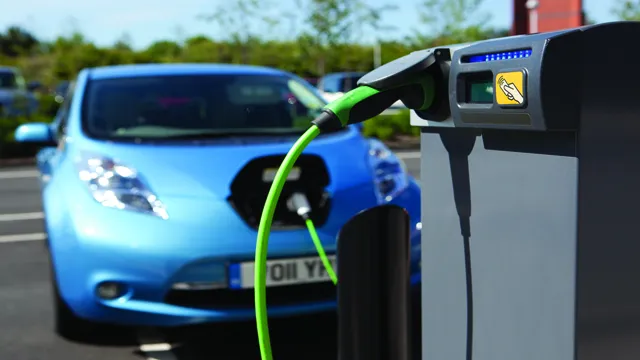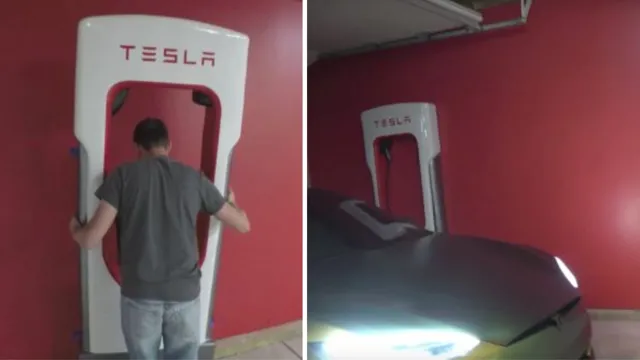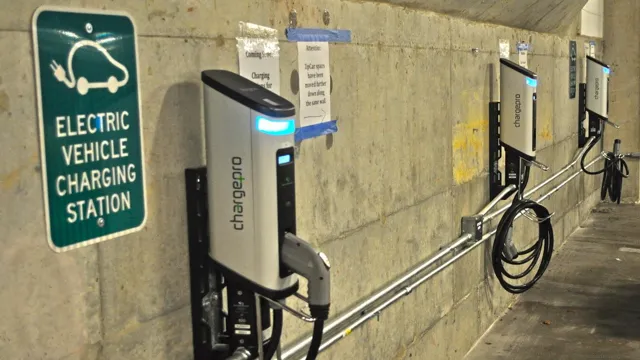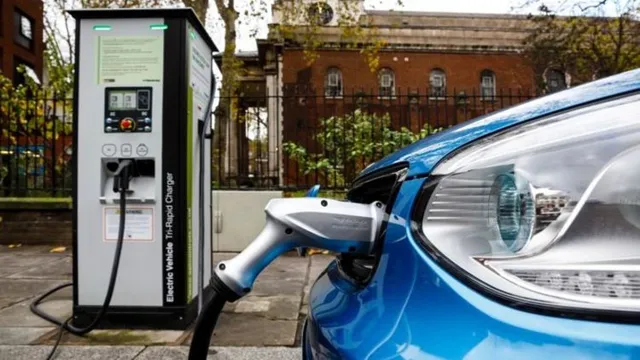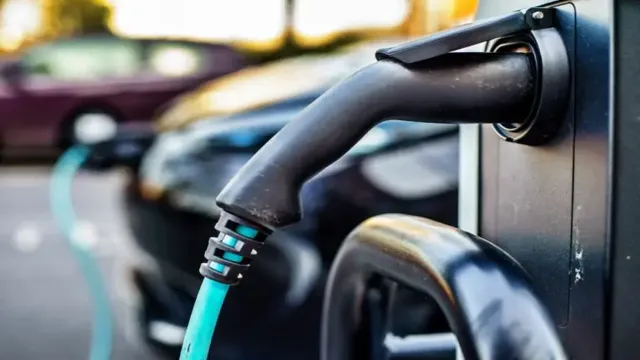DIY EV Charging: A Comprehensive Guide to Installing Your Own Electric Vehicle Charging Point
Are you ready to take the leap towards electric vehicles but not quite sure where to start with charging? Look no further than DIY EV charging at home. With the convenience of charging overnight in your own garage, owning an electric vehicle has never been easier. Plus, by installing your own charging equipment, you can save money on installation fees and have more control over your charging experience.
But where to begin? In this blog, we’ll dive into the basics of DIY EV charging, from selecting the right equipment to safely installing it in your home. Think of it as your step-by-step guide to bringing your EV home charging dreams to life. So grab some coffee, pull up a chair, and let’s get started on your electrifying journey.
Benefits of Installing Your Own EV Charging Point
Yes, you definitely can install your own EV charging point, and doing so can come with a number of benefits. By installing your own charger, you can enjoy the convenience of being able to charge your EV at home, which saves you time and money by reducing the need to travel to public charging stations. It also means you can charge your vehicle overnight, taking advantage of off-peak electricity rates and ensuring that your EV is always fully charged when you need it.
Installing your own charging point can also add value to your home, as it makes it more desirable for prospective buyers who own EVs or are considering buying one. All in all, installing your own EV charging point can be a smart investment for anyone who wants to enjoy the benefits of electric driving without the hassle of traveling to a public charging station.
Cost Savings
Installing your own EV charging point at home has a wide range of benefits, including cost savings. With a personal charging station, you can save money on fuel expenses by using cheaper electric rates available overnight. Additionally, you can avoid the high costs of public charging stations, which can be up to six times more expensive per kWh than home charging rates.
Plus, it eliminates the need to make unplanned trips to gas stations or charging stations, saving both time and money. Moreover, owning an EV charging point can add value to your property, becoming a selling point when it’s time to move on. By installing your own EV charging point, you not only enjoy the convenience of having your own charging station but also the long-term cost savings.
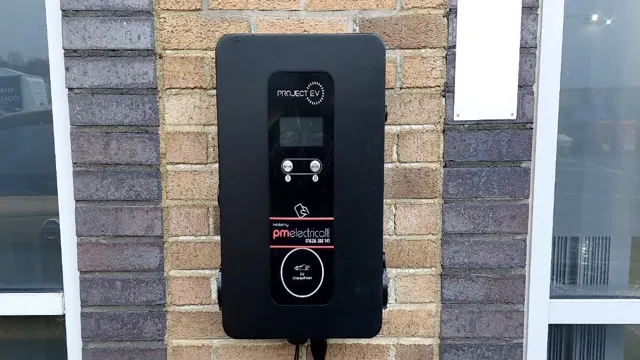
Convenience
Convenience One of the biggest benefits of having your own EV charging point at home is the convenience factor. No more wasting time and energy searching for a public charging station, which can often be already occupied or out of service. With a charging point at home, you have the freedom to recharge your electric vehicle whenever it suits you, even overnight.
This means that you can wake up to a fully charged vehicle each morning, ready for your day ahead. Installing a home EV charging point guarantees that you won’t have to worry about your EV’s range, and you can enjoy stress-free driving without the fear of running low on battery power. Plus, having an EV charging point at home can increase your property’s value, making it a smart investment for the future.
Customization Options
Customization Options Installing your own EV charging point at home offers numerous benefits, and one of the most prominent ones is the ability to customize the setup according to your specific needs and preferences. Unlike public charging stations, which can limit the type of charging option and the charging speed available, a home EV charging station can be tailored to your EV’s battery capacity and driving habits, enabling you to optimize your charging time and reduce your energy costs. Additionally, many home EV charging stations come with various customization options, such as Wi-Fi connectivity, voice commands, automatic charging scheduling, and remote monitoring.
These features allow you to stay in control of your charging experience, knowing your vehicle is always ready to go when you need it. With the vast range of customization options available, it’s essential to choose a high-quality charging station that meets your current and future charging needs, ensuring that you enjoy all the benefits of EV ownership.
Understanding the Installation Process
If you’re wondering whether you can install your own EV charging point, the answer is: it depends on your skills and comfort level with electrical work. While it may seem like a fairly straightforward process, there are several factors that come into play when installing an EV charging point. First and foremost, you’ll need to ensure that your home’s electrical system can handle the additional load.
This may require upgrades to your electrical panel or even a dedicated circuit. Additionally, you’ll need to select the appropriate charging unit for your vehicle and ensure that it’s installed correctly so that it meets all safety standards. While some homeowners may be comfortable taking on this project themselves, it’s always recommended that you consult with a licensed electrician who can provide expertise and guidance throughout the installation process.
Ultimately, making the decision to install your own EV charging point requires careful consideration and a thorough understanding of the installation requirements.
Check Your Home’s Electrical Capacity
When it comes to installing new electrical appliances in your home, it’s essential that you understand your home’s electrical capacity. This means determining whether your home’s electrical system can handle the added demand of new appliances or if you need to upgrade your system to handle the load. Understanding the installation process is crucial, as it can prevent electrical fires, short circuits, or even electrical shocks.
It’s always better to err on the side of caution and hire a professional electrician to inspect your home’s electrical system before you install new appliances. This will help you avoid any potential hazards and ensure that your home’s electrical capacity is sufficient to meet your needs. So, don’t take any chances and make sure you always check your home’s electrical capacity before adding any new appliances.
Determine Your Charging Needs
Before installing an electric vehicle charging station in your home, it’s important to determine your charging needs. This includes considering your driving habits, the type of electric vehicle you own (or plan to purchase), and the range of your vehicle’s battery. Once you have a clear understanding of your charging needs, the next step is the installation process.
While some EV charging stations can be installed by the owner themselves, it is recommended to hire a professional electrician to ensure proper installation and safety. The installation process includes assessing your home’s electrical system and capacity, selecting the appropriate charging station and amperage, and installing the necessary wiring and circuit breakers. It’s important to note that different charging stations may have different installation requirements, so consulting with a professional is essential.
Overall, understanding your charging needs and the installation process can ensure a smooth and efficient experience with your electric vehicle charging station.
Selecting The Right Charging Equipment
When it comes to selecting the right charging equipment, understanding the installation process is crucial. It’s important to first assess the electrical capacity of your home or business before choosing a charging station. This can be done through a panel upgrade, which will increase the amperage capacity of your electrical service.
Once this is done, you can select the appropriate charging equipment based on your needs, such as the charging speed, connectivity, and compatibility with your electric vehicle. Installing the charging equipment requires a licensed electrician who will ensure the station is properly connected to your electrical system, and that all safety regulations are met. Selecting and installing the right charging equipment takes careful consideration, but with proper research and guidance, you can ensure that your electric vehicle is efficiently powered up for the road ahead.
Safety Measures to Consider
If you’re considering installing your own EV charging point, there are some important safety measures you need to keep in mind. First and foremost, it’s important to ensure that you have the necessary knowledge and skills to perform the installation safely. If you’re not confident in your abilities, it’s best to entrust the job to a licensed and qualified electrician.
Additionally, you’ll need to make sure that the circuit breaker and wiring in your home can accommodate the charging point’s requirements. This can vary depending on the type of charging point you choose, so it’s important to do your research beforehand to ensure that you’re making the right choice. Finally, it’s essential to have a professional electrician inspect the installation to make sure that everything has been done correctly and that there are no safety hazards present.
Overall, while it is possible to install an EV charging point on your own, it’s crucial to take safety into consideration and to seek professional help if needed.
Hire a Licensed Electrician
When it comes to electrical work, safety should always be a top priority. Hiring a licensed electrician is an important step in ensuring that your home or business is not only functioning properly but also safe for everyone in the vicinity. A licensed electrician has undergone extensive training and has the necessary skills to handle the job safely and efficiently.
They are also equipped with the appropriate tools and equipment to get the job done right the first time. In addition, hiring a licensed electrician can also help you avoid potentially dangerous electrical mishaps in the future. So, why take the risk of doing the job yourself when you can entrust it to a qualified professional? Remember, safety always comes first when it comes to electricity.
Follow Building Codes and Standards
When building anything, it is essential to follow the relevant building codes and standards to ensure that the structure is safe for use. Safety measures must be considered and incorporated into the building design, construction, and any alterations. These measures help regulate the use of construction materials, structural elements, and design features that comply with the building codes and standards.
The codes and standards stipulate minimum safety requirements, such as minimum tolerances, stability, and load-bearing capacity of the structure, to prevent the building from collapsing or causing accidents. It is the builder’s responsibility to ensure that all safety standards are met during construction and before the structure is occupied. Therefore, it is critical to use reliable and high-quality construction materials, hire experienced professionals, and have inspections during and after construction to ensure the safety of the structure.
Following building codes and standards is crucial to ensure that the building is safe, secure, and structurally sound for everyone’s enjoyment, safety, and long-term use.
Regular Maintenance and Safety Checks
Regular maintenance and safety checks are essential for keeping your vehicle running smoothly and safely. When it comes to maintaining safety, there are various measures you should consider. Start by inspecting your vehicle’s braking system, which includes checking the brake pads, shoes, and rotors.
Your tires’ condition is crucial as well, so make sure they have enough tread, there is no uneven wear, and the tire pressure is correct. Other parts of the vehicle that require regular inspection include emissions, lights, radiator, fluids, and electrical system. Keep in mind that regular maintenance does not guarantee total safety, but it helps to mitigate potential accidents and prolongs the vehicle’s lifespan.
Remember, choosing to skip or postpone safety checks can be costly in terms of time, money, and human lives. So, take good care of your vehicle and prioritize safety at all times.
Conclusion
To sum it up, installing your own EV charging point may seem like a daunting task, but with a little bit of research and elbow grease, it’s absolutely achievable. Just be sure to follow the proper safety protocols and regulations, and soon enough you’ll be charging up your electric vehicle with ease. So go ahead and give it a try – after all, if you can figure out how to program your own TV remote, you can definitely handle this!”
FAQs
What are the requirements for installing my own EV charging point at home?
The requirements for installing your own EV charging point at home may vary depending on your location and the type of charger you want to install. Generally, you will need a dedicated circuit, a compatible charging unit and a licensed electrician to conduct the installation.
How much does it cost to install an EV charging point at home?
The cost of installing an EV charging point at home can vary depending on several factors including the type of charging unit, location and electrical work required. However, the average cost of installation ranges from $500 to $2,500.
Can I get any rebates or incentives for installing my own EV charging point?
Yes, there are several rebate and incentive programs available to help offset the cost of installing an EV charging point. These programs vary by location and may be offered by federal, state or local governments, as well as utilities and other organizations.
What type of charging unit should I install at home?
The type of charging unit you should install at home depends on several factors including the electric vehicle you own, your driving habits and budget. Level 1 and Level 2 charging units are the most common options for residential use, while Level 3 charging units are typically reserved for commercial use.

